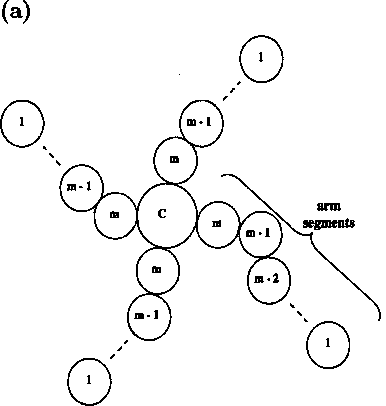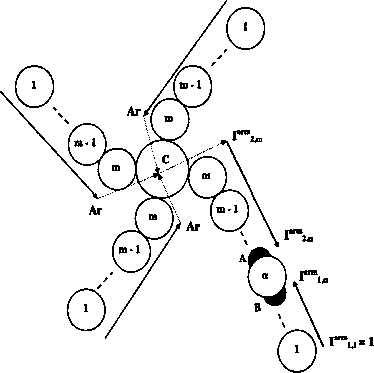
Figure 7.3: (a) Schematic of a star polymer molecule, ‘c’ is the articulation segment
with f branches. Each branch has ‘m’ segments. The total number of segments in the star
polymer molecule are: N = /m + 1. (b) Illustration of the calculations of the /ɪ and ⅛
functions of the segments in one of the arms of the star polymer. The initiator to the lɪ
function is Iγrγn = 1, while the initiator to the ⅛ function depends upon the arm factors
from all the other arms of the star polymer.
(b)

7.3 Results and discussion
Modified iSAFT is applied to study the partitioning of the star polymer fluid
between two confining surfaces. All the segments of the chains are athermal or the
model only includes the entropie effects of polymer confinement and neglects the
enthalpic effects. The two confining surfaces are impenetrable flat hard walls, hence
the inhomogeneity is only in one dimension (z). Figure 7.4a shows the total segment
density (p(z)) profiles of 3-arm star polymer fluid (m = 5) confined between two
surfaces separated by H = 10 σ, at different average packing fractions (‰s) of the
fluid in the confined space. The profiles are symmetric about the middle of the
197
More intriguing information
1. Problems of operationalizing the concept of a cost-of-living index2. The name is absent
3. Evidence-Based Professional Development of Science Teachers in Two Countries
4. Les freins culturels à l'adoption des IFRS en Europe : une analyse du cas français
5. Modelling the health related benefits of environmental policies - a CGE analysis for the eu countries with gem-e3
6. The name is absent
7. Biological Control of Giant Reed (Arundo donax): Economic Aspects
8. TINKERING WITH VALUATION ESTIMATES: IS THERE A FUTURE FOR WILLINGNESS TO ACCEPT MEASURES?
9. DETERMINANTS OF FOOD AWAY FROM HOME AMONG AFRICAN-AMERICANS
10. Moffett and rhetoric